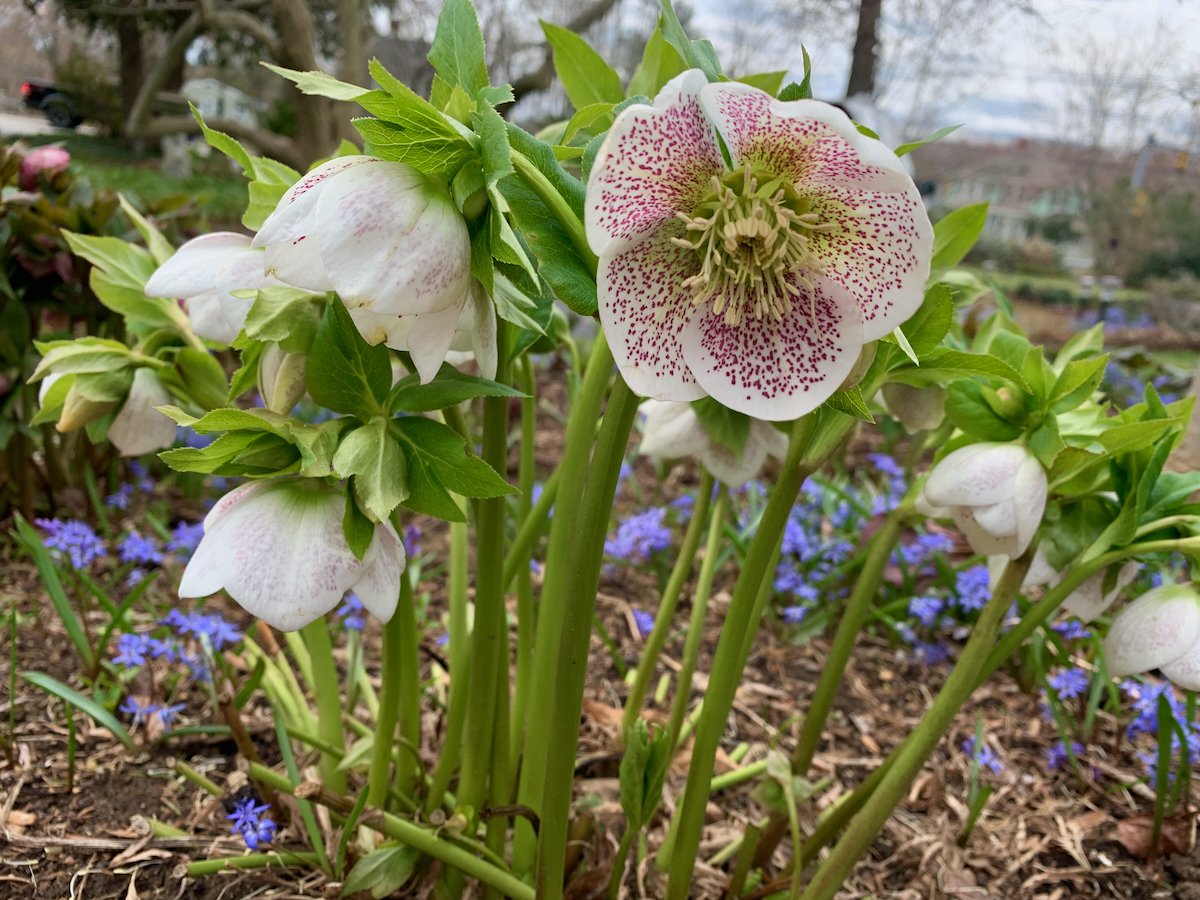More Hellebores, Please
/Hellebores have become one of my favorite plants since I began growing them about 10 years ago. They bloom at a time when the garden is mostly dormant - from late fall to early spring - and bring a smile to my face every time I see them bravely holding up their blossoms against the harsh weather. They are easy to grow, virtually care-free, and there are wonderful new varieties introduced every year.
This hellebore Niger began blooming in early December due to our warm winter this year.
Hybrid hellebores are expensive to purchase (about $17 for a one-gallon pot) because it takes three to five years for them to bloom, and growers generally only sell blooming plants. You can buy smaller plants through mail order. But the most economical way to increase your collection is to propagate your own plants. You can divide all hellebores except the caulescent varieties (H. argutifolius, H. livius and H. foetidus).
Unlike other perennials, hellebores are long-lived plants that do not need to be divided to remain vigorous. In researching hellebore division, I have found a range of recommendations as to when to divide your hellebores - from dividing them in early spring, to mid spring while they are still in bloom, to waiting until mid-summer, to early fall (September to October). Since opinions on this vary so widely, I think that it is safe to do the division in any of these seasons. I have done it successfully in early summer, while the flowers were still visible on the plant, but after their beautiful display in early spring. The keys to successful division seem to be:
Make sure that there are flower buds in each division
Divisions should not be allowed to dry out after replanting
Divisions should have enough time to establish a healthy root system before winter
To divide a hellebore, dig up the entire plant, wash the crown free of soil in order to better see what you are doing, and then cut between the growth buds with a sharp knife. Try to leave at least three buds in each division so that the plants will recover quickly.
For your first experience, select a plant that has 5-10 flowers on it. Older plants are very woody in their center. Make sure that you have a very sharp knife. I keep a small pruning saw with a serrated blade just for the purpose of dividing perennials. Make sure that each division has a portion of the center along with the newer growth from the edge of the plant.
Plant your divisions in full shade to almost full sun. Add compost to the planting hole, firmly tamp down the soil, water, and mulch. I also water with a high-phosphorous fertilizer to encourage good rooting. Divisions should be kept moist throughout their first growing season until frost.
One of my hellebore gardens with divisions from my own plants.
Another way to add hellebores to your collection is to grow on any seedlings that have rooted around the mother plant. Not all hellebores produce seeds - some are sterile hybrids. But many of the orientalis type do set seed every year, and if you look carefully, you will see little seedlings growing around the mother plant. These seedlings should be moved to a nursery location after they have developed a true set of leaves, so that they will not be shaded out by the mature plants. I grow them on for about two years in a nursery bed, and then plant them out in the garden, eager to see what these babies will look like when they bloom.
Seedlings with fully formed leaves at the base of the mother plants.
Two-year old seedlings in the nursery bed where they enjoy beautiful soil and no competition from other plants.
Hellebore foetidus produces many seedlings in my garden, and I find them in random places where they have planted themselves. Since foetidus is not a long-lived plant, you should keep some seedling growing by the mother plant so that you continue to have hellebores in that spot. Because they have finely cut foliage, these hellebores do not shade out their babies.
Hellebore foetidus seedlings
I have so enjoyed slowly collecting new cultivars, dividing my plants and growing on hellebores from seed, that I now have about 50 hellebore plants throughout my garden. And when I see them blooming every winter, I know that I will add more!
Sources: White Flower Farm, Pine Knot Farms, Plant Delights, Broken Arrow
You Might Also Like















